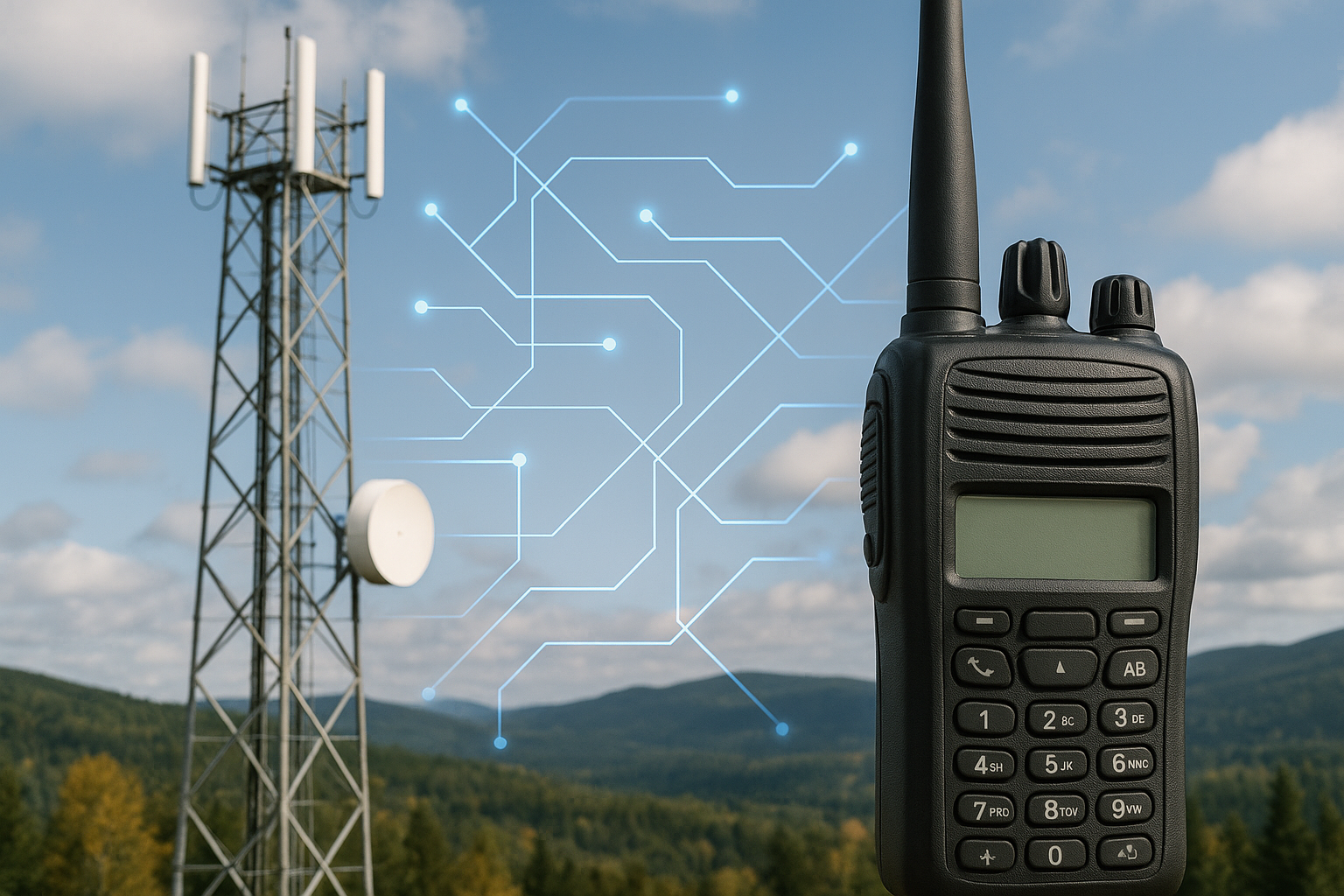When Cell Towers Quit, RoIP Keeps Talking
In Northern Canada, reliable communication isn’t a nice-to-have—it’s life or death. But what happens when a storm knocks out cell coverage? Or when you’re 300 km from the nearest signal?
Enter: Radio over IP (RoIP).
RoIP is a technology that uses your existing IP network (fiber, microwave, satellite[Internet Connectivity]) to transmit radio signals over vast distances. It links traditional two-way radios to digital systems—and to each other—across sites, regions, even provinces. Instead of relying on analog towers with limited range, RoIP leverages the internet to connect teams no matter how remote.
What is RoIP, Really? Think of it as VoIP (Voice over IP) for radios. Just like VoIP transformed business telephony by sending calls over the internet, RoIP transforms radio communications by doing the same. It converts radio signals into digital packets that travel across your IP network. The result? You can patch together multiple radio systems, extend their range, and integrate them with other digital tools.
Why it matters:
- Radios don’t rely on fragile cellular infrastructure
- Digital trunking means crystal-clear, interference-free comms
- Integrates radios, phones, and computers on one secure network
- Keeps field teams, dispatch, and HQ in constant contact
- Improves coordination during emergencies, outages, or disaster scenarios
- Scales easily across new sites without new towers
Who Needs RoIP? If your operations span large, rugged geographies with unreliable cell coverage—RoIP is built for you.
- Mining companies coordinating safety across vast, dangerous sites
- Healthcare clinics in isolated communities linking to regional hospitals
- Airports and aviation teams needing consistent tower-to-ground comms
- First responders needing interoperability across jurisdictions
Real-world impact:
- A mining site in Nunavut coordinates safely with Yellowknife HQ
- A nursing station stays connected to emergency services during a satellite outage
- An airport maintains operations even when cell lines are down
- A wildfire response team patches local VHF radios into national command networks
And because RoIP runs over IP, you’re not laying new lines. You’re using what you already have—and gaining resilience, interoperability, and reach. It’s a smart investment in continuity, compliance, and control.
How It Works in Practice Let’s say your team uses handheld radios on-site. With RoIP, you can:
- Install gateways that digitize those signals
- Route them through your satellite or fiber connection
- Connect to a dispatch center or even mobile devices via an app
Now your team in Kugluktuk can talk to dispatch in Edmonton. Or a contractor with a smartphone can monitor comms from the road. It’s seamless, scalable, and secure.
CasCom: Your Expert Partner in RoIP Solutions CasCom has deep expertise in designing, deploying, and managing communication infrastructure in the most demanding environments in Northern Canada. We understand the terrain, the constraints, and the stakes.
Our team works with industries including mining, aviation, law enforcement, and healthcare to deliver RoIP systems that are:
- Tailored to your operational and geographic needs
- Rapidly deployable with minimal disruption
- Integrated securely into your broader IT and comms infrastructure
Whether you’re connecting a single outpost or linking multiple high-risk sites, CasCom brings the experience, equipment, and executional focus to make RoIP work for you. We don’t just sell radios—we deliver communication continuity when everything else fails.













